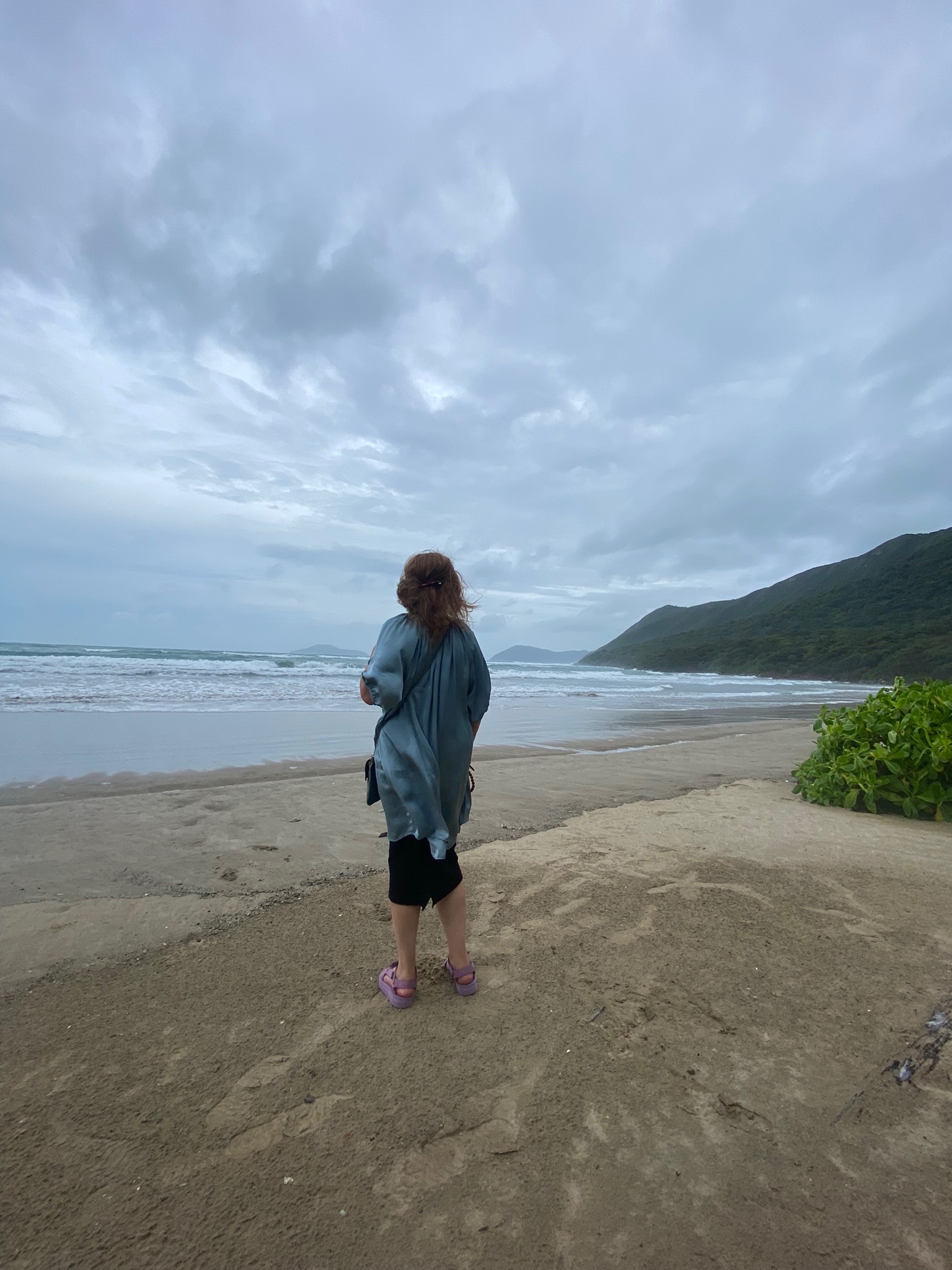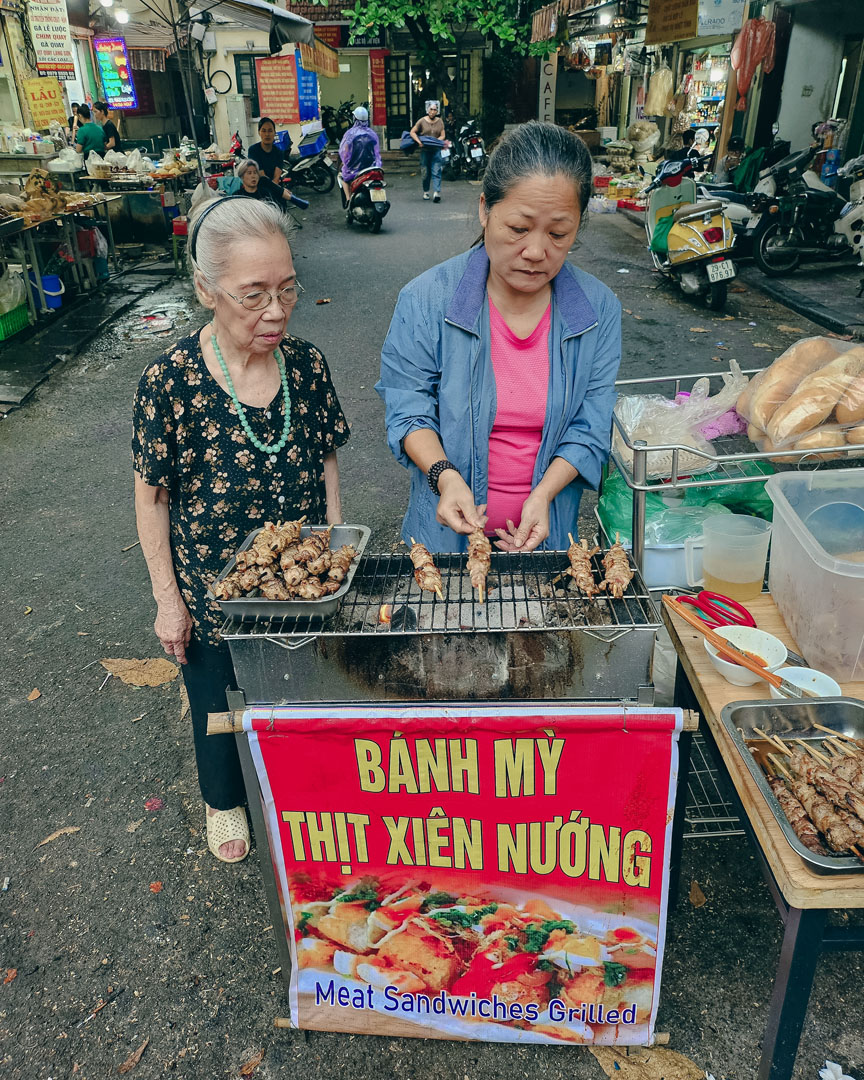Vietnamese etiquette & customs cheat sheet

If you’re travelling to Vietnam for the first time, a basic knowledge of local customs and etiquette will go a long way to help you avoid any embarrassing situations!
Vietnamese people are very proud of their culture and heritage, and understanding the subtle social conventions and customs that go with that is the best way to show respect.
We’ve spoken to some of our favourite travel bloggers for their top tips and created a handy guide you can print and carry with you when you are travelling in Vietnam. Don’t worry about learning all of these off by heart: with a courteous attitude and an open mind, you’ll find the locals will happily teach you their ways and customs.

General
When travelling in Vietnam, you’ll quickly realise that a few things are pretty different from in the Western world. With this in mind, these are some general tips to remember for day-to-day in Vietnam:
Do
- Dress more conservatively than you might at home (ideally covering your shoulders and knees)
- You can hold hands, but public displays of affection such as hugging and kissing are frowned upon.
- Respect social hierarchies and understand the concepts of "collectivism" and "face" (more on this later)
- Pass items with both hands
- Smile, wave, and say xin chao (hello)!
Don’t
- Have bare shoulders or wear shorts to temples or pagodas - this is seen as very rude and offensive
- Flaunt wealth in public, this is considered impolite
- Take photos of military installations or anything to do with the military. This can be seen as a breach of national security. You should also avoid taking photos of representations of political figures such as Ho Chi Minh (known affectionately as "Uncle Ho") or General Vo Nguyen Ap. Where photos are prohibited, there will usually be sign.
- Get naked. Nudity is always seen as totally inappropriate, even when sunbathing!
- Be offended if somebody laughs at you. In Vietnamese culture, laughing at somebody's embarrassment is a way of helping them make light of the situation — it's not intended to make fun or offend you.
Blogger’s story: Bikini faux pas
We spoke to Kara from the fantastic travel blog Heels in My Backpack about her experience backpacking in Vietnam and over Southeast Asia. She provided some very helpful advice if you’re visiting a local water park and usually prefer a bikini over a one-piece.
"I’d make sure that a swimsuit is part of the mix, with fairly conservative coverage. I say this because of a particular experience I had in Ho Chi Minh City in Vietnam… A new travelling pal I’d made had heard of a water park nearby and it sounded like a fun day out of the city, so a group of us decided to go.
"When we arrived, it was clear this was a local water park, not at all catered to foreigners. That’s great, I hear you exclaim, get off the beaten track, see how the locals really do! Well yes that sounds awesome, but you see, the Vietnamese are not really fans of the bikini…
"This soon became apparent as we realised that everyone was wearing surf-esque t-shirts and long shorts. Men, women and children alike gawked at our, what now felt revealing and offensive, 2-piece bikinis. Literally pointing, laughing and, even though I don’t speak Vietnamese, taking the mick. I’ve never felt more inappropriate in my entire life
“So here’s my top tip: bring some sort of swimsuit to avoid cultural faux pas!!"
Wearing a bikini is not always a faux pas. Attitudes to what is and isn't appropriate dress are changing in Vietnam, especially amongst the younger generation, and you'll find that in big cities or popular tourist areas wearing a bikini will not cause any offence. Take a look at what others are wearing and use your common sense; you'll soon see what is suitable.
6 of the best things to do in Hoi An, Vietnam
Shopping
Shopping in the West compared to the East can be a very different experience — especially at local markets. Unlike high street chains and big companies, these vendors need to make a living, and fixed prices don’t really exist. Therefore, it’s in their best interest to try and get as much money for their offerings as possible.
Haggling in an unfamiliar country can be a scary experience for some, but if you want to try and get things a little cheaper there’s no harm in trying your hand at it. Here are our top tips:
Do
- Haggle — vendors will expect you to haggle a little, but you’ll need to get over the fact that you won’t pay a local’s price. Bargaining over a price should be done with a cheerful attitude and if the vendor won’t budge, either pay or walk away
- Stay cool, literally! Make sure you’re well fed and hydrated, topped up with sunscreen and a hat, and not in any position where you’re likely to get angrier or more agitated than usual
Don’t
- Do not ever lose your temper in public or when bargaining for a purchase. This is considered a serious loss of face for both parties. Always maintain a cool and happy demeanour and you will be reciprocated with the same
- Try not to get upset if you meet someone who paid less than you for the same item. Street vendors make a living from selling their wares to tourists, don’t take it personally
Blogger’s story: Just keep walking!
Whilst you’re out and about shopping in Vietnam, one aspect of everyday life that won’t fail to escape you is the traffic. Noisy, manic, and endless, the sounds of hundreds of engines is something you will quickly get used to. But what if you see an amazing stall on the other side of the road, how will you make it across through that stream of motorbikes?
Crossing the road in Vietnam takes a little practice, a dash of bravery, and a whole lot of confidence. We asked backpacking expert Nikki, director of the online travel magazine Southeast Asia Backpacker, for her tips on how to navigate Vietnam’s roads:
“Anyone who's ever been to the Vietnamese cities of Hanoi and Ho Chi Minh City will know that one of the adventures to be had is simply crossing the road!
“As a million motorbikes, bicycles and cars whizz by, you have to navigate your way across the street, with no zebra crossings and few traffic lights.
“Our advice? Stay calm and keep walking, slowly, at a steady pace. You'll be amazed as the traffic twists and turns around you, as the drivers predict your next move across the street. As the traffic doesn't move that fast in Vietnam, due to the high volume, you're unlikely to be hit if you: Just. Keep. Moving!”
In addition to Nikki's advice, we'd like to add that you should never run when crossing the street, or step backwards to avoid traffic. If you're not sure what to do, you can signal your movements with your hands or ask somebody local to help you.

Just keep walking!
Dining and Table Manners
Street food is a huge part of the culture in Vietnam, make sure to try some delicious pho (Vietnamese soup) and other treats from street vendors.
However, if you are invited into someone’s house for a meal, here are a few cultural and social conventions to be aware of:
Do
- If you are invited into someone’s home, you might like to bring a gift: sweets, flowers, or fruit for example. Gifts should be wrapped in colourful paper
- Always wait to be shown where to sit
- Set your chopsticks down to speak and for a rest after every few mouthfuls
- Hold your bowl of food close to your face – nose to bowl is acceptable!
- When eating soup, the spoon is held in the left hand
- When tea is offered, accept it graciously (even if you don’t want tea). Similarly, if you're offered alcohol, it's considered polite to at least take a sip - or drink the first cup, if possible. More is better if you can! If you really can't, just explain to your host and they should understand
- Slurp your noodles! Don’t be afraid to express your enjoyment of your food by making a lot of noise
Don’t
- Gifts should never be yellow or black, or wrapped in either yellow or black paper. These colours are seen as bad omens and will be very offensive if given to your hosts
- Do not give handkerchiefs as a gift, they are seen as a symbol of a sad parting or a farewell (in fact the idea of handkerchiefs is seen as quite disgusting in the East, so steer clear of them altogether!)
- Do not sit down until the oldest member has seated themselves
- Do not leave any food on your plate, this is considered impolite
- Leaving a pair of chopsticks sitting vertically in a rice bowl looks very much like the incense sticks that are burned for the dead. This is a powerful sign and is not appreciated anywhere in Asia
Top 5 food experiences in Vietnam
Blogger’s story: Slurping and sucking – leave your table manners at home!
Tom runs the immensely useful website Vietnam Coracle, a totally independent travel guide to the country which is full of tips, reviews, and helpful information. We seriously recommend you check it out before heading on a tour of Vietnam.
We managed to catch up with Tom during a three-week-long research trip and he gave us some tips on the cultural differences in Vietnam surrounding food:
“Lots of cultural differences in Vietnam involve food. In particular, dining etiquette. For example, it is usually considered polite to slurp or make noises while eating in Vietnam. This is especially true when it comes to eating noodles: slurping is the norm and there are many (good) reasons for this, all of which are related to taste, flavour, and general enjoyment of the food you're eating.”
We really recommend reading Tom’s full Noodle Slurping Guide, but here are a few pointers taken from the original piece.
- Slurping helps to cool your food down. In Vietnam, if you leave a bowl of food to cool, you’ll quickly be told: ‘ăn nóng cho ngon đi!’ (eat it while it’s hot). Slurping is the most effective way to do this – don’t be shy!
- The intake of air when slurping is supposed to help you experience the tastes of the food more deeply, like the way wine tasters will sniff and even gargle with their wine.
- A dish of noodles isn’t all about the noodles, the delicious juice will go to waste unless you slurp it.

Photo: Tom, Vietnam Coracle
Interaction, body language & gestures
In Vietnam, there are specific social conventions that are followed in business and social situations. Circumstances such as greetings have certain gestures and required etiquette that should be followed.
Being respectful of these customs will go miles to help you make new friends in Vietnam. Here are our top tips on how to interact with the local people:
Do
- Make an effort to verbally greet people you meet. Xin chào (pronounced seen chow) is the appropriate formal greeting for strangers
- Handshakes are the common greeting and goodbye. Some Vietnamese use a two-handed shake, with the left hand on top of the right wrist
- The traditional greeting is to press your hands together in front of your body and bow slightly, but this is a bit old-fashioned now and only practised in formal situations. In most cases, a bow is enough.
- Always remove shoes when entering someone’s house
- As a form of respect to elderly or other esteemed people, such as monks, take off your hat and bow your head politely when addressing them
- Do initiate a handshake with a member of the same sex. If a woman extends her hand, you may shake it, if not, bow your head instead
Don’t
- Never, ever point your feet towards anything sacred, such as a Buddha image
- Foreign visitors to Vietnam are generally not permitted to invite Vietnamese nationals into their hotel rooms
- Do not touch someone’s head or shoulder or pass items over someone’s head. This is incredibly offensive, even with small children. This is because in Asia, the head is the symbolic highest point
Blogger’s story: Duck, duck, don’t!
As we have stated above, it is offensive to touch someone on the top of their head as the head is seen as the highest point of a person’s being and is very sacred.
Luckily, this is not something that people usually do and is easy to avoid most of the time. There are, however, certain situations where mistakes can happen, such as what happened to a family travel blogger we spoke to about her time in Southeast Asia.
“Whilst waiting for a train in Vietnam, our children began playing with a group of Vietnamese children. Totally forgetting the cultural tradition of avoiding touching one’s head, we began a game of ‘Duck Duck Goose’, if you don’t know the game, this is where one person runs around a circle of seated people tapping each head saying ‘duck…duck…goose!' When ‘goose’ is said, the head tap-ee leaps up to try and chase the tap-er back to the empty space in the circle.
“It took us a while to work out that the children weren’t tapping each other’s heads, and then we realised our huge cultural faux pas! We felt so bad about it but luckily everyone thought we were silly Westerners and we carried on with a slightly altered version of the game, offence avoided!”
Visiting temples
One of the most critical times to make sure that you respect local customs and traditions is when visiting temples and other holy sites. Stephen at A Backpacker’s Tale has given us his top tips on how to be respectful when visiting holy sites in Vietnam:
Do
- Bow your head to pay respect to the temple and the Buddha statues inside.
- Wear appropriate clothing – you will need to cover their chest and shoulders. If you are wearing a dress, make sure it hangs lower than your knees. Top tip: always pack a light scarf in your bag to cover yourself in case a spontaneous temple visit occurs!
- Wear sandals. This isn't required, but it's helpful. Many places inside temples require you to remove your shoes to enter, so wearing sandals makes life easier.
- Try to keep quiet. It is OK to whisper in parts of the temple but save the talking for outside the temple grounds.
Don’t
- Don't wear skin-tight clothing or shorts (below the knees is a good rule to stick by)
- As mentioned above, never ever point your bare feet at the monks and statues of Buddha.
- Try to avoid any public displays of affection when around temples or holy sites, they are considered extremely disrespectful
- Don't ever touch the statues or ever touch the head of a monk. In fact, it is best if you don't touch the monks at all!
See the best of Vietnam on our Vietnam's Greatest Hits itinerary. Want to find out more? Get in touch with our holidays to Asia experts today.



